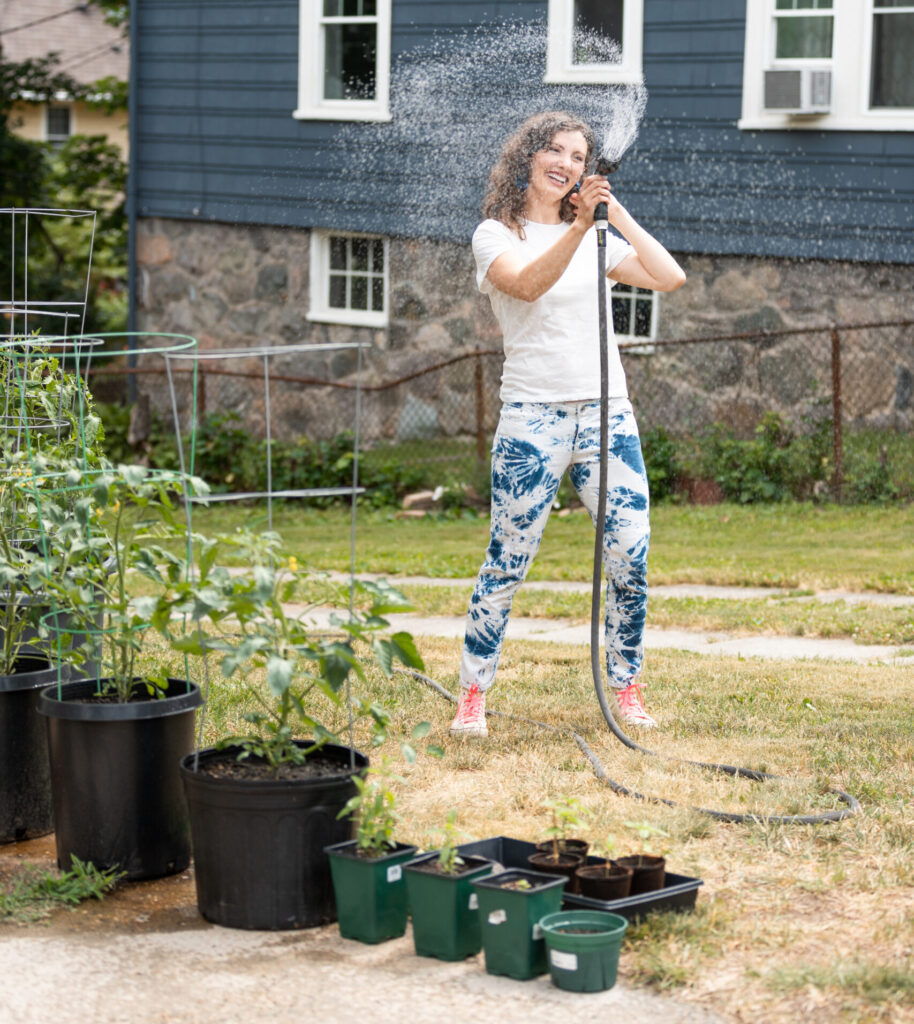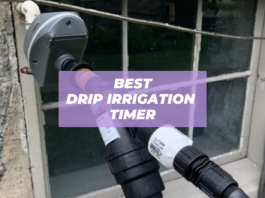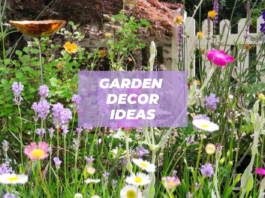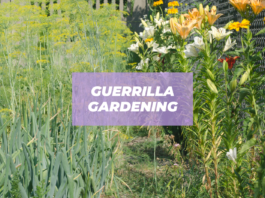This post may contain affiliate links, which means that I may receive a commission if you make a purchase using these links.
Grow bag gardening is the perfect solution for the beginner gardener that doesn’t have much space or their own yard. Learn how to grow a bounty of vegetables with this ultimate grow bag gardening guide for beginners.
As someone who has been gardening from in the city for nearly a decade, I understand the struggles that come with urban and apartment gardening. (Check out my small vegetable garden ideas for apartment and small backyards.)
Some issues that may come with urban and small-space gardening include:
- Poor or contaminated soils that are not ideal for in-ground gardening beds.
- Limited space or no gardening space at all.
- Landlords disapproving of gardening on their property.
Luckily, grow bag gardening offers a solution to all of these potential pitfalls.
While I am lucky enough to live in an apartment that has space where our landlord allows us to garden, I still supplement our production with grow bags–especially placing them on top of cement or other areas that would not otherwise allow for food production. I have grow bags lining the sidewalk to our house, and it’s lovely to pick a cherry tomato or pepper on the way to the front door!
Hi, I’m Leslie!

Hi there, reader! My name is Leslie, and I’ve been gardening in the city for about a decade now. I love to write about gardening, urban homesteading, and living a sustainable-ish life.
I hope this post inspires you to start your own grow bag garden, no matter what your gardening situation is!
This post is all about grow bag gardening.
What Are Grow Bags?
Grow bags are simply fabric bags that are pot-shaped with handles made for filling with soil and for growing plants. They are often made with plastic felt fabric, which is why I recommend trying to find grow bags made with recycled materials.
Grow bags are sold in different sizes measured by volume. They often start as small as one gallon, and go up to 100 gallons or more! I recommend buying at least 20-gallons to give your plants room to grow (and so the soil won’t constantly dry out!)
Why Use Grow Bags?
There are myriad reasons to try grow bag gardening:
- Grow bags allow you to garden nearly anywhere–on pavement, in the driveway, on your deck, and more. Grow bag gardening allows folks gardening in the city on in an apartment or other small space to grow vegetables, flowers, fruits–nearly anything can be grown in a grow bag!
- Maximize your gardening output with grow bag gardening! Do not underestimate the food production potential that is achievable with grow bags. You can even use grow bags to supplement your more traditional gardening methods and make the most of sunny areas where you might not otherwise be able to garden. I love popping a grow bag on the sunny side of the porch.
- Grow bags can be reused year after year, contributing to your sustainable gardening practices. I find that the material used in most grow bags is incredibly durable and will last a very long time. I’ve reused my grow bags for over five years now! Just make sure you properly wash them year-over-year.
Best Grow Bags
Now that I’ve explained all the reasons to love grow bag gardening, let me share some of my favorite grow bags.
Again, grow bags come in many sizes, but I recommend starting with at least 20-gallon bags. This size will allows for a good balance of water retention and drainage, while allowing enough room for the plants’ roots to grow.
These are my favorite, incredibly durable 20-gallon grow bags from Amazon that have lasted me many seasons. The woven felt fabric allows for aeration and proper drainage.
Gardzen 10-Pack 20 Gallon Grow Bags

Best Plants for Grow Bags
You might be surprised by just how many different kinds of plants can thrive in grow bags: vegetables, herbs, greens, berries–you name it! These are some of my favorites for planting in grow bags:
- Tomatoes – Choose a determinate variety so the tomato doesn’t outgrow the grow bag.
- Peppers – Virtually all types of peppers thrive in grow bags (hot peppers, bell peppers, etc.)
- Cucumbers – Bush cucumbers are especially suitable for grow bags, but if you plant a climbing varieties ensure that you have a trellis for it to grow.
- Lettuces – Lettuces and other greens can be planted densely in grow bags. Thin the plants by plucking them out whole when they are small for baby lettuce salads.
- Radishes – Radishes are very quick to mature, making them good candidates for succession planting throughout the season.
- Herbs- Many herbs do well in grow bags, like cilantro, parsley, oregano and thyme.
- Blueberries – Make sure to buy a dwarf variety. Blueberries need acidic soil and good drainage.
- Strawberries – Strawberries do very well in containers, as they have shallow roots.
How to Fill Grow Bags for Vegetables
You can certainly simply fill grow bags with container gardening soil and get away with it for the most part. My favorite soil for container gardens, including grow bags, is the Coast of Maine raised bed mix.
However, you can also take a more advanced approach if you would really like to ensure your plants thrive in their grow bags.
For this, you can create a modified version of sheet mulching within your grow bag:
- Place a thin layer of rocks or sticks at the bottom of your grow bag to ensure good drainage.
- Fill your grow bag nearly to the top with your soil, leaving about four inches at the top.
- Layer two inches of compost on top of the soil.
- Plant!
- Sprinkle an organic fertilizer according to the package instructions.
- Cover with a about an inch of mulch. I like straw for this purpose, but you can also use another layer of compost, bark, wood chips, dried leaves, etc.
Best Soil for Grow Bags
My favorite soil for grow bags is the Coast of Maine raised bed mix.
Coast of Maine Castine Blend Organic and Natural Outdoor Raised Bed Mix

Grow Bag Disadvantages
No gardening solution is perfect. Grow bag gardening does have some disadvantages.
First, grow bags tend to dry out more quickly because more of the soil surface is exposed to air and heat through the penetrable fabric. This is good for aeration, but potentially bad if you don’t stay on top of your watering.
To make sure your plants are always properly watered in a grow bag, I recommend inserting a ceramic watering pot or hooking your grow bag up to your drip irrigation system. Both of these solutions can increase the intervals in between waterings, allowing you to go on vacation, etc.
This post was all about grow bag gardening.
What to Read Next
Looking for more grow bag gardening ideas and small space gardening tips? Read these posts for more gardening goodness:



